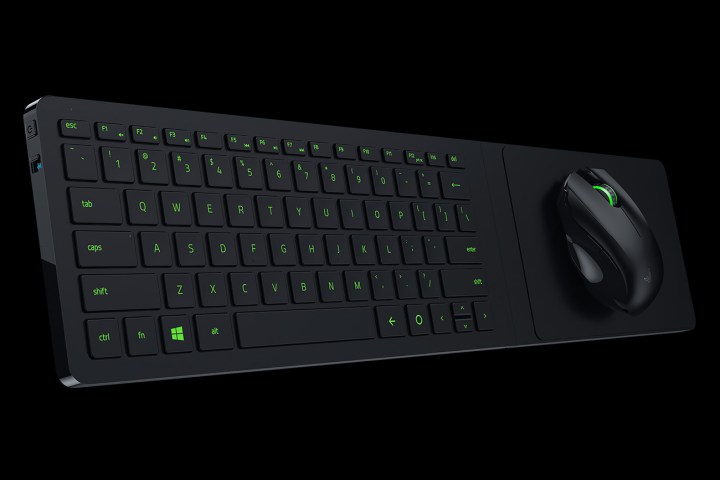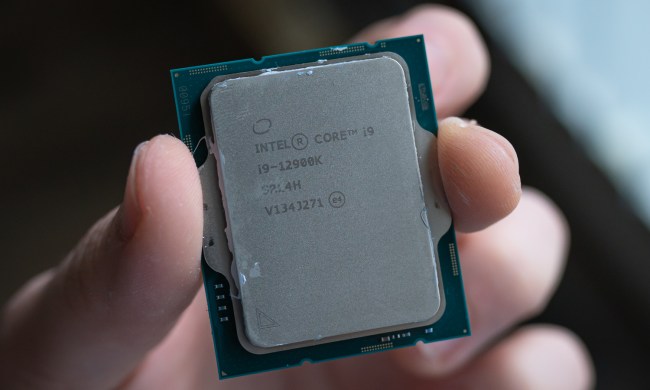
The base device is considered to be a “lapboard,” designed to comfortably fit on the gamer’s lap. It connects to the desktop by way of a bundled wireless 2.4GHz adaptor, but it also includes Bluetooth LE connectivity for use with popular gaming consoles. However, because the mouse platform is mounted to the right of the keyboard, Razer has essentially ignored its left-handed customers. Perhaps a left-handed model is in the future?
Regardless, the Razer Turret features an ergonomic, super-slim form factor and a foldable hinge so that the device can be tucked away neatly when not in use. It’s powered by built-in lithium polymer batteries that support up to four months of keyboard usage (1,500mAh), and up to 40 hours of non-stop play on the mouse (1,000mAh). The charging dock appears to be part of the package, which plugs directly into a wall outlet.
On a more technical front, the keyboard’s anti-ghosting ability supports up to 10 simultaneous key presses. The numbering and lettering are backlit in Razer’s signature green, and the chiclet keys themselves support both Microsoft Windows and Google Android. There’s no number pad included, so gamers will have to shift their key assignments over to the letters before jumping in.
The mouse seems rather standard, offering the two main buttons, the green-lit mouse wheel, and two thumb buttons on the left. The tiny USB dongle the lapboard combo relies on likely stores itself in the peripheral’s bay underneath. Razer really doesn’t describe the hardware specs of its mouse on the product page or announcement other than the previously-mentioned 3,500 DPI sensor, which isn’t too shabby for a PC gaming mouse.
“The Razer Turret brings the immense world of PC gaming to a previously impossible frontier — the living room — where only consoles have traditionally roamed until now,” says Razer co-founder and CEO Min-Liang Tan. “Finally, we have a perfect solution for gamers to enjoy the unrivaled precision of a mouse and keyboard combination from the comfort of the couch with the durability and reliability that PC gamers demand.”
What’s unclear is if the Razer Turret is compatible with the company’s Synapse software. This downloadable tool allows customers to assign commands to the keys and mouse buttons, assign macros, and store those settings in the cloud. Razer Synapse supposedly works for all Razer peripherals, and is currently free to download for Windows 7/8/10 and Mac OS X 10.7 to 10.10. At this time, the Synapse webpage does not show the Razer Turret as a compatible device, but that could soon change.
Customers looking for a laptop-based solution for their couch-based PC gaming can purchase the Razer Turret now for $160. You can grab it directly from Razer here, or locate your nearest Razer device reseller, such as Walmart or GameStop.



